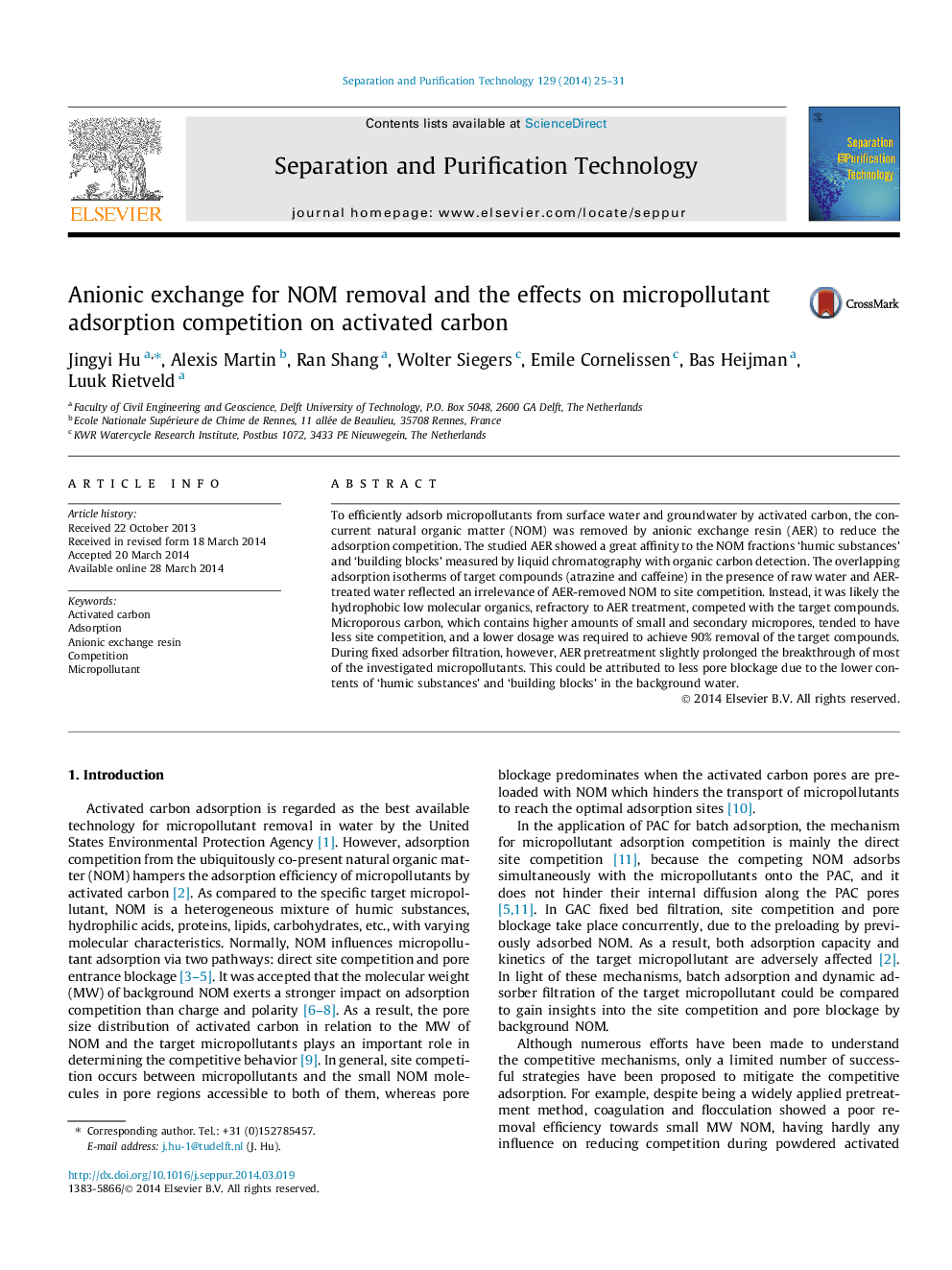| Article ID | Journal | Published Year | Pages | File Type |
|---|---|---|---|---|
| 641225 | Separation and Purification Technology | 2014 | 7 Pages |
•Adsorption competition of micropollutants and NOM was examined on activated carbon.•Anionic exchange resin was applied to remove NOM and relive adsorption competition.•Anionic exchange resin pretreatment had no impact on reducing site competition.•Anionic exchange resin pretreatment was effective to lessen pore blocking.
To efficiently adsorb micropollutants from surface water and groundwater by activated carbon, the concurrent natural organic matter (NOM) was removed by anionic exchange resin (AER) to reduce the adsorption competition. The studied AER showed a great affinity to the NOM fractions ‘humic substances’ and ‘building blocks’ measured by liquid chromatography with organic carbon detection. The overlapping adsorption isotherms of target compounds (atrazine and caffeine) in the presence of raw water and AER-treated water reflected an irrelevance of AER-removed NOM to site competition. Instead, it was likely the hydrophobic low molecular organics, refractory to AER treatment, competed with the target compounds. Microporous carbon, which contains higher amounts of small and secondary micropores, tended to have less site competition, and a lower dosage was required to achieve 90% removal of the target compounds. During fixed adsorber filtration, however, AER pretreatment slightly prolonged the breakthrough of most of the investigated micropollutants. This could be attributed to less pore blockage due to the lower contents of ‘humic substances’ and ‘building blocks’ in the background water.
